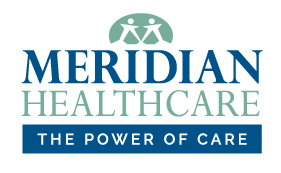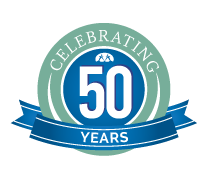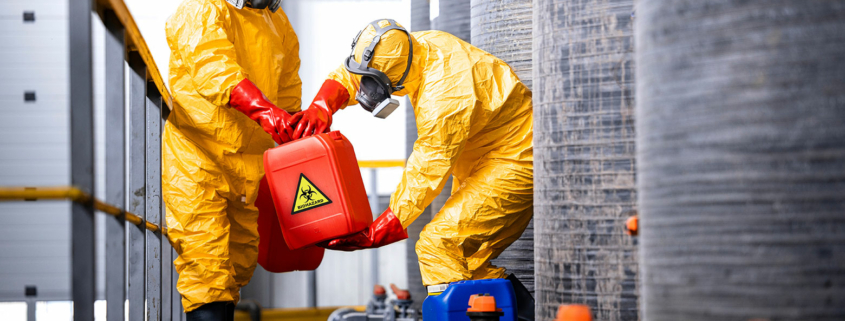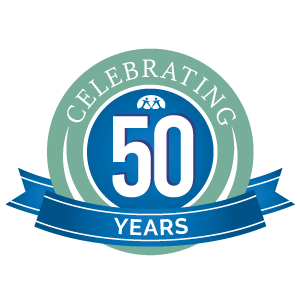What are the Categories for Occupational Hazards?
Workplace safety depends on both employees and management to identify these health and safety hazards to create better working conditions. There are six types of workplace hazards to be aware of: biological hazards, chemical hazards, ergonomic hazards, physical hazards, safety hazards and work organization hazards.
Table of Contents
6 Workplace Hazards & How They Affect Workplace Safety
Type 1: Biological Hazards
Type 2: Chemical Hazards
Type 3: Ergonomic Hazards
Type 4: Physical Hazards
Type 5: Safety Hazards
Type 6: Work Organization Hazards
The Role of OSHA
The Importance of NIOSH
Workplace Safety Tips
Meridian Healthcare Ensures Workplace Health and Wellness
6 Workplace Hazards & How They Affect Workplace Safety
The reality is that almost every work environment contains hazards, and most jobs include more than one of these six concerns.
Type 1: Biological Hazards
Biological hazards can cause or carry infection. Easily identifiable biological hazards include bacteria, viruses, and fungi. As one might expect, healthcare workers are most at risk for adverse health effects due to biological hazards. Veterinarians and those who work with dangerous plant material are also at high risk. These workers have the possibility of being exposed to bodily fluids, droppings, insect bites, and infectious plant materials.
Type 2: Chemical Hazards
Many occupations require employees to handle chemical substances in order to perform their jobs. There are also many workplaces where employees can be accidentally exposed to hazardous chemicals, whether due to an accident or improper labeling. These hazardous materials can be in the form of vapors (gasses), liquids, or solids. Common examples of chemical hazards include solvents, acids, flammable substances, carbon monoxide, and even common cleaning products.
Type 3: Ergonomic Hazards
Ergonomic hazards are caused by repetitive motions (using the same muscle groups) or physical strain for long periods of time. Ergonomic hazards are not limited to intense physical activity; they can also stem from sitting at a computer or workstation. If someone spends hours typing, for example, it can result in carpal tunnel syndrome or other injuries in the wrists and hands. Bad posture while seated can cause neck, shoulder, and back pain.
Type 4: Physical Hazards
Physical hazards are those that affect the body’s physical well-being. Examples of these include loud noises, radiation, heat, and ultraviolet rays. Physical hazards don’t have to come in direct contact with the body to cause harm. A physical hazard can cause injury to workers simply by close proximity. Physical hazards are not necessarily short-term; injuries can also occur due to prolonged or long-term exposure.
Type 5: Safety Hazards
There is a distinction between physical hazards and physical safety hazards. While the two may sound similar, OSHA defines physical safety hazards as anything that could cause or lead to an accident or injury. These situations can include electrical hazards, misuse of equipment, and slipping hazards.
Type 6: Work Organization Hazards
Work organization hazards are situations that cause short-term or long-term stress, which have received a great deal of attention in recent years. These hazards stem from excessive workload, negative work culture, discrimination, and workplace violence.
The Role of OSHA
The Occupational Safety and Health Administration, otherwise known as OSHA, is the federal agency responsible for ensuring a minimum level of safety in the workplace in all territories of the United States, and to all employers with one or more employees. The agency was created by the Secretary of Labor in 1970, exercising powers granted by the Williams-Steiger Occupational Safety and Health Act of 1970.
OSHA’s role lies largely in identifying risks and environmental hazards in the workplace before accidents or fatalities occur. They stress that risk assessment and hazard identification are key, and that companies should first make reasonable changes in workplace organization and conditions to maintain or improve safety.
OSHA establishes responsibilities for employers to follow, such as the issuing of personal protective equipment, providing training in a language that employees understand, and informing workers about chemical hazards.
OSHA also establishes certain rights for workers. These rights include stipulations like protection from retaliation due to whistleblowing, safe equipment or machinery, and readily available copies of employer safety records.
The Importance of NIOSH
The National Institute for Occupational Safety and Health (NIOSH) is a part of the Centers for Disease Control (CDC) and was established by the same act of Congress that established OSHA. Its role is to study occupational safety and health. It analyzes trends over time and continually develops new recommendations to keep workplaces safe.
Workplace Safety Tips
It’s important to know that employees can take measures to help create a safe work environment for themselves and their fellow coworkers. These can include the following types of actions:
- Understanding all safety procedures and as well as being aware of emergency exits and fire extinguisher locations.
- Always wearing the appropriate personal protective equipment.
- Maintaining a clutter-free work area.
- Not operating machinery, tools, or equipment without the proper training.
- Refraining from using drugs or alcohol while at work.
- Reporting any unsafe working conditions to your supervisor or manager.
- Taking your required breaks.
- Maintaining proper posture when lifting or moving heavy objects.
- Being aware of your surroundings.
Meridian Healthcare Ensures Workplace Health and Wellness
There are many different types of occupational hazards in the workplace, but each typically falls into one of the aforementioned categories. It’s important for employees to know what workplace hazards are present so they can protect themselves and stay healthy while working.
When businesses need to implement compliance or safety programs, they turn to the occupational health experts at Meridian HealthCare. Since 1989, Meridian has been the area’s leader in workplace wellness solutions.
Our experienced, dedicated staff not only includes primary care physicians and nurses, but also licensed social workers and certified EAP and substance abuse professionals. Contact Meridian HealthCare today and create a fully customized plan for your business.





